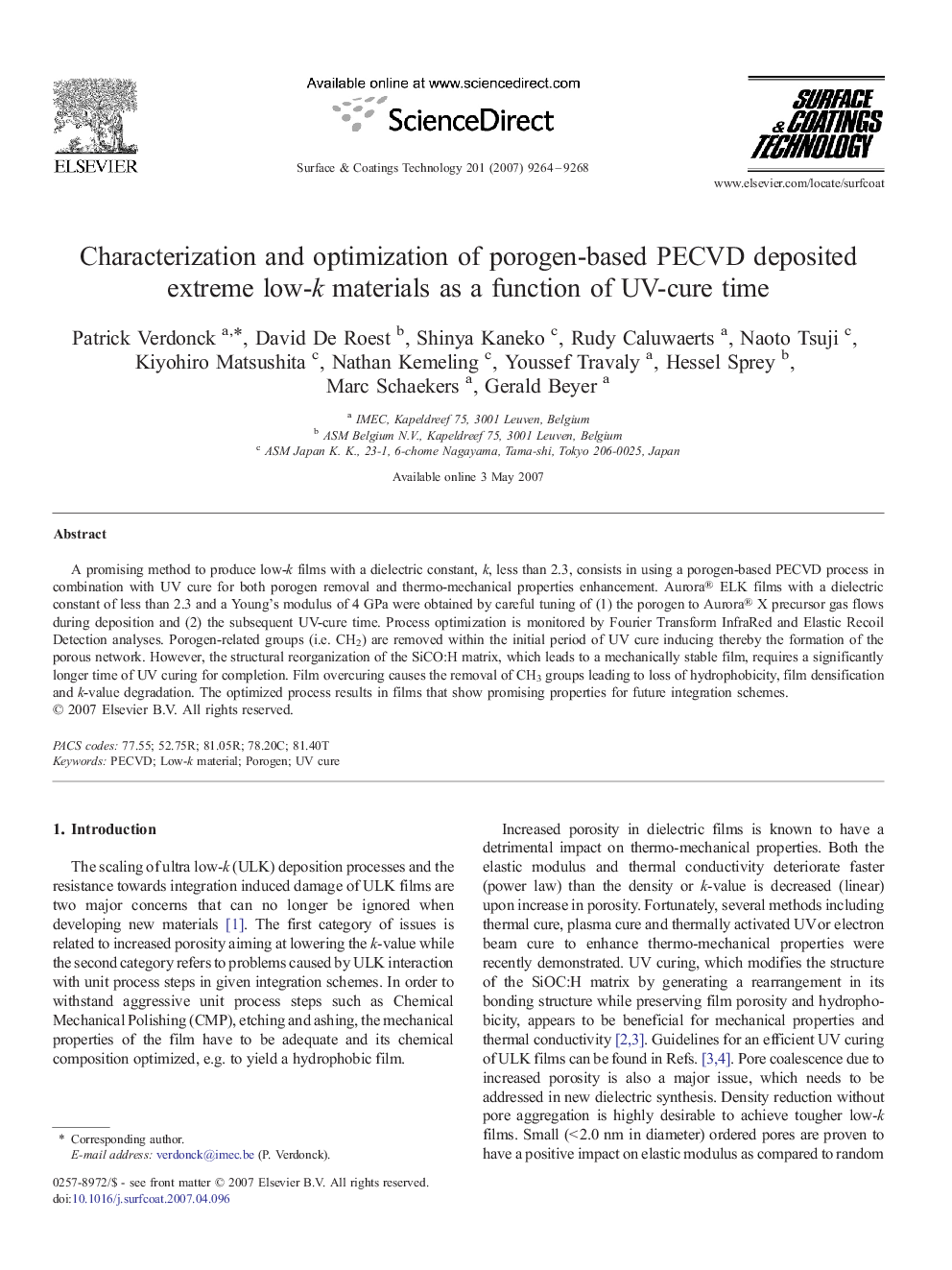| Article ID | Journal | Published Year | Pages | File Type |
|---|---|---|---|---|
| 1662335 | Surface and Coatings Technology | 2007 | 5 Pages |
A promising method to produce low-k films with a dielectric constant, k, less than 2.3, consists in using a porogen-based PECVD process in combination with UV cure for both porogen removal and thermo-mechanical properties enhancement. Aurora® ELK films with a dielectric constant of less than 2.3 and a Young's modulus of 4 GPa were obtained by careful tuning of (1) the porogen to Aurora® X precursor gas flows during deposition and (2) the subsequent UV-cure time. Process optimization is monitored by Fourier Transform InfraRed and Elastic Recoil Detection analyses. Porogen-related groups (i.e. CH2) are removed within the initial period of UV cure inducing thereby the formation of the porous network. However, the structural reorganization of the SiCO:H matrix, which leads to a mechanically stable film, requires a significantly longer time of UV curing for completion. Film overcuring causes the removal of CH3 groups leading to loss of hydrophobicity, film densification and k-value degradation. The optimized process results in films that show promising properties for future integration schemes.
